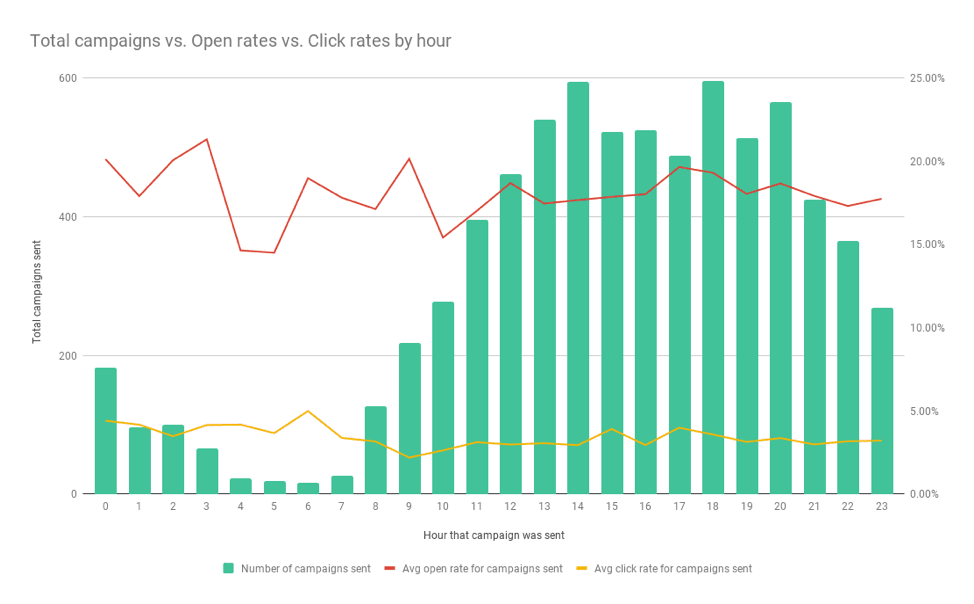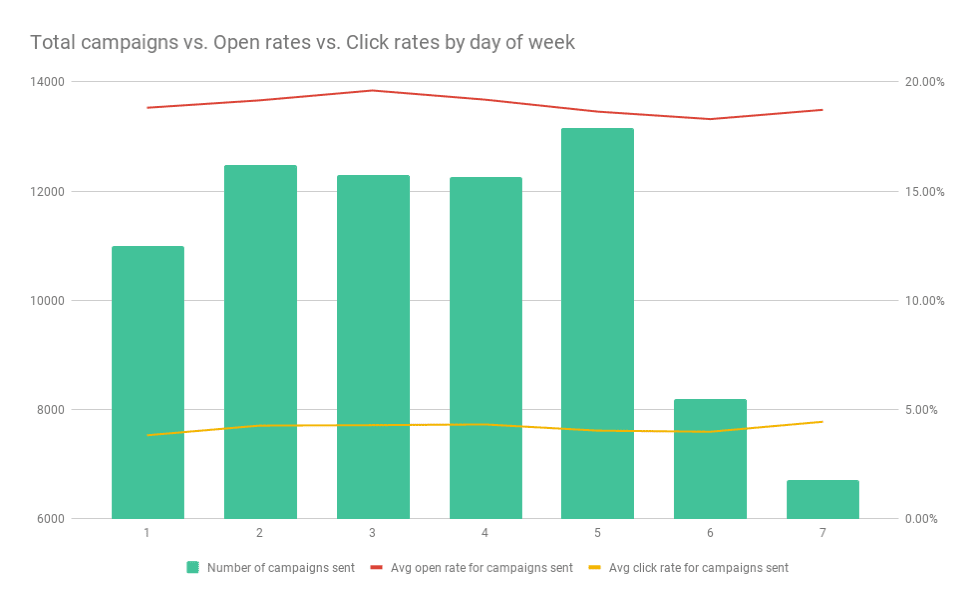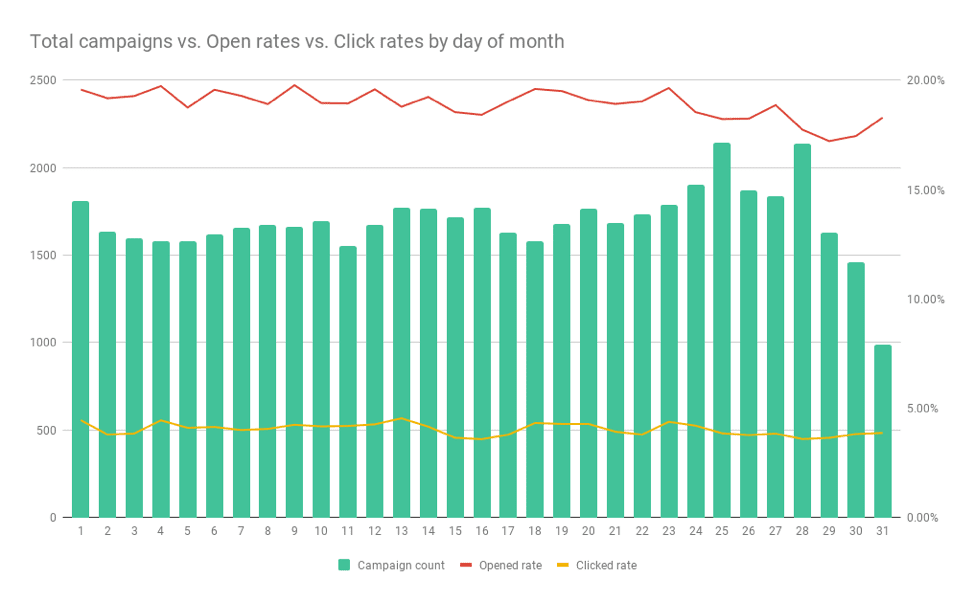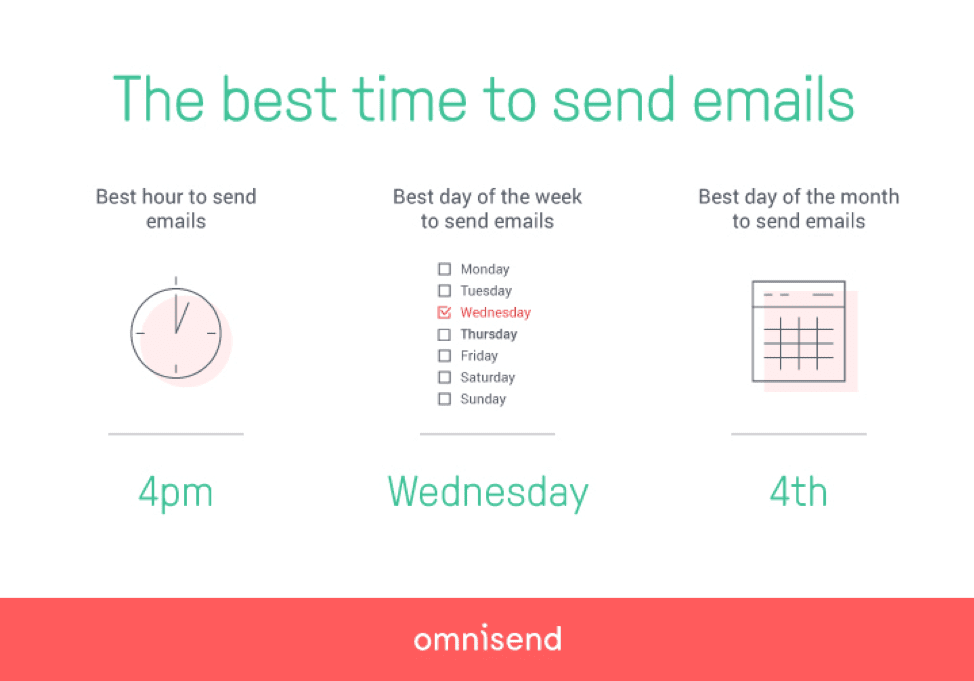We analyzed more than 791 million emails to see what the best hour and day is to send high-converted email marketing
Every year at Omnisend we analyze our clients’ email marketing and marketing automation data to see the biggest trends, opportunities and best practices that lead to great conversions and sales.
Recently, we dug deep into 9,500 brands that sent more than 92,000 email campaigns (that’s more than 791 million emails, by the way) to see what the best hour, the day of the week, and day of the month is to send out email campaigns.
By understanding these practical results, you’ll be able to adapt your own email marketing strategy to improve your conversions and skyrocket your sales.
But first, it’s important to emphasize the importance here of list-building. If you don’t have a big enough list, you won’t really see significant results that can help inform you about the best email marketing strategy.
Because of the high-conversion, low-annoyance factor, I’d highly recommend you start using an exit-intent popup with a great offer (free shipping, 15% discount, or high-value resource) to grab your visitors’ emails.
That being said, let’s look at what our data has to say.
The best hour to send emails
Figuring out the best hour of the day to send emails can help you with your campaigns. Specifically, we’ll look at open rates to determine timing success.
Generally, the time of day for best opens depends on:
- user availability: are they sleeping? At work? Eating dinner?
- competition: how many other businesses are emailing at that time?
- relevance: for your niche, is the this a good time to send emails?
Because the number of niches is pretty varied, it’s pretty difficult to make conclusions about relevance within this data set.
Similarly, because of the differing time zones, we decided to analyze campaigns sent in one area with one time zone: the UK.
Given those conditions, we can look at the results and see what the data says about competition and user availability.
When we plot the open and click rates based on hours, we get a pretty good trend line. However, since the total campaigns sent can affect the significance of those rates, it’s important that we include that to get a more complete picture:

From this chart, we can see that 5 pm (17h00) has the best combination of open rate (19.7%) and click rate (3.98%) with at least 450 campaigns sent.
The other high click rates or open rates will be largely due to a low number of campaigns sent.
What this means is simple: at 5 pm, the number of emails that a user receives may be lower, or the availability (or willingness to read emails) may be higher.
That’s why, if you’re planning on sending out email campaigns about your latest product, sales offer, or even a new line of products, 5 pm would be a great time.
The best day to send emails
If you’re sending weekly emails, you’re probably wondering what the best day of the week is to send emails.
There are often so many variables, such as an interesting subject line, relevant product, and even weather, that it’s hard to determine what the actual best day is to send emails.
That’s why we’ve done the hard work for you.
We narrowed our search down to focus on audiences in the US, Canada, Australia, the UK, and India to see what kind of open and click rates they’re seeing based on the day of the week.
While we see the best open rates on Wednesdays (averaging 19.6%) and the highest click rates on Sundays (4.4%), we can make the most comprehensive conclusions when looking, again, at open rates, click rates, and amount of campaigns sent together:

With an average open rate of 19.61% and a click rate of 4.3%, Wednesday seems to be the best day for high-converting metrics.
This could be a logical conclusion, since most best practices list Monday or Tuesday mornings as being the best days to send emails.
Similarly, sending B2B emails, or even sending your CV, is different from sending B2C emails. Consumers seem to prefer Wednesdays, although Thursday is a close second here.
The best day of the month to send emails
Lastly, we looked in general at what the best day (or even the best period) of the month is to send emails.
Many brands send weekly emails, but not all do. Some prefer to send bi-weekly, or even monthly newsletters.
That’s why it can be very useful to know which day of the month works.
When we looked at our users’ data, we saw that the best day of the month is the 1st, with an open rate of 19.87%, whereas the 4th was a close second with an average open rate of 19.68%.
For click rates, the best day is the 4th (4.53%) and the 21st is a close second with an average open rate of 4.52%.
However, for a comprehensive view, we’ll combine open and click rates with total campaigns sent to make some better conclusions.
When looking at total open and click rates compared to campaigns sent, we see that the 4th of the month seems to have the best overall rates.
The overall best time to send emails
So, with all that data, is there any way we can combine results to see what would be the overall best time to send emails?
Let’s make some conclusions based on what we’ve seen above:
The best time to send emails will probably be 4 pm on a Wednesday if you’re sending regular campaigns.
If you’re sending out monthly campaigns:
The best time to send your email campaign would be on the 4th of the month, or at least nearer to the beginning of the month.
This is a logical conclusion since many people usually get their salaries at the end or very beginning of the month.
That period is a golden time for e-commerce marketers since both the impulse and financial means to buy is higher at the beginning of the month.
Here’s a nifty chart that combines all of our conclusions:

There is one caveat though: ABT.
More specifically: Always Be Testing.
Statistics and data should be viewed more as guidelines, rather than absolutes. Therefore, it’s important that you test these trends based on your own products, brand, and niche to see what works for you.
Good luck!
Bernard Meyer is a content marketer for
Omnisend, the e-commerce marketing automation platform dedicated to helping e-commerce stores build strong, lasting relationships with their customers. He also has a passion for good research and helping e-commerce businesses with their multichannel marketing needs.








